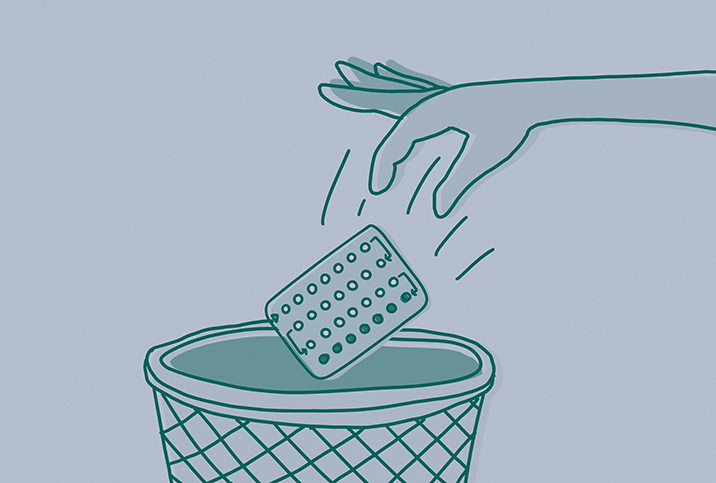Is the Birth Control Patch Right for You?

Options for birth control have never been more plentiful. The pill is maybe the most well-known contraceptive method for women, but the less-discussed patch is a viable choice that comes with some advantages.
The thin, 1¾-inch sticky patch is worn on the upper torso, upper arm, abdomen or bum, and releases the same hormones found in oral contraceptives.
How the patch works
The patch is a transdermal hormonal contraceptive, meaning it works through the skin to release hormones that prevent pregnancy. Hormones progestin and estrogen are released by the patch, preventing fertilization by stopping the release of an egg. As a backup form of security, the hormones released by the patch also create a thicker and stickier cervical mucus that prevents sperm from reaching an egg should one happen to release.
Application typically begins on the first day of bleeding, or day one of your cycle. The patch starts to work immediately to prevent pregnancy. If you apply the patch on a day other than day one of your cycle, you'll need a backup method of birth control, such as condoms, for seven days. If you stop using the patch or miss an application, there is an immediate risk of pregnancy.
The patch versus other methods
The patch is similar to other hormonal birth control options in a few ways, including the hormones released and how it is dosed.
"The patch contains the same hormones, estrogen and progesterone, as in a combined oral contraceptive pill," confirmed Kecia Gaither, M.D., an OB-GYN at NYC Health & Hospitals/Lincoln in the Bronx in New York City.
Transdermal delivery, however, results in fewer peaks and valleys of estrogen, but a higher total estrogen exposure compared with oral contraceptives. Similar to oral contraceptives, the patch is used on a 21-7 cycle, applied once weekly for three weeks followed by a patch-free week.
"The patch is designed to be used continuously for three weeks, then one week of rest for the withdrawal bleed, aka menses," explained G. Thomas Ruiz, M.D., OB-GYN lead at MemorialCare Orange Coast Medical Center in Fountain Valley, California. Most oral contraceptives work the same way, with sugar pills included in the pack to be used during the off-week.
"Each set comes with three patches, and you use one patch per week. The manufacturer does not recommend continuous patch use, that is, using the patch for several weeks at a time without having a withdrawal bleed," Ruiz stated.
In terms of effectiveness, the patch compares favorably to the pill.
"The patch has the same efficacy as the pill if worn correctly—about 99 percent," Gaither said.
That rate is with perfect use, however. Typical use, with human error taken into consideration, reduces efficacy to about 91 percent.
Benefits and side effects of the patch
One clear benefit of the patch is peace of mind. The only concern is missing a dose, but the weekly application of a fresh patch makes that less likely.
"The patch is for women who want [the] convenience of [a] once-a-week system, where there is less likelihood of forgetting, as with the pill," Ruiz said.
As with other hormonal contraceptives, the patch also provides health benefits.
"Good side effects include less acne, milder cramping, shorter lighter periods, stable moods," Gaither said.
Compared to the pill, the patch does have a higher incidence of venous blood clots, which can lead to thromboembolism. Potentially, a clot can break off and go to your lungs, Ruiz warned. Though studies on this concern offer mixed results, the risk of developing venous thromboembolism (VTE) is considered to be about twice as high with the patch compared to oral contraceptives. But the overall risk of VTE remains low regardless of which contraceptive you choose.
Aside from VTE, the side effect profile is similar to those of oral contraceptives, with slightly higher rates of breast tenderness. Another consideration with the patch is skin sensitivity. The adhesive may cause itchiness or other skin reactions, and the possibility of an allergy exists, as well. You can avoid irritation by applying the patch to different areas each week.
Talk to your provider if you think the birth control patch may be a convenient option for you.


















